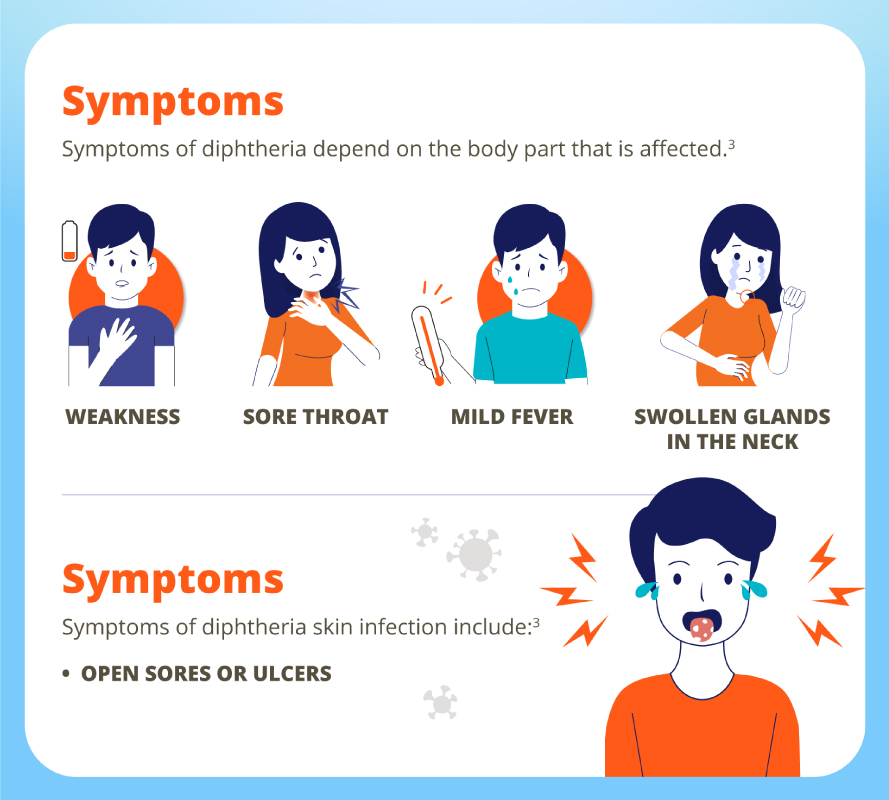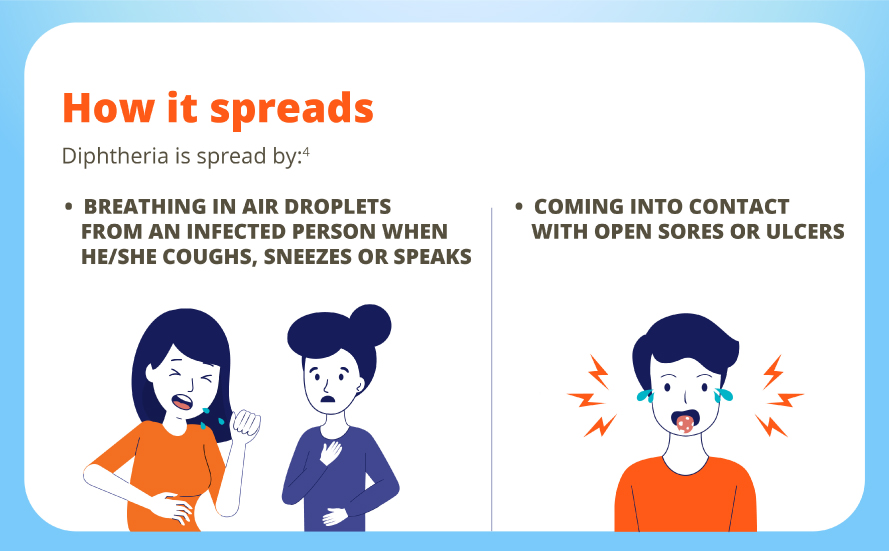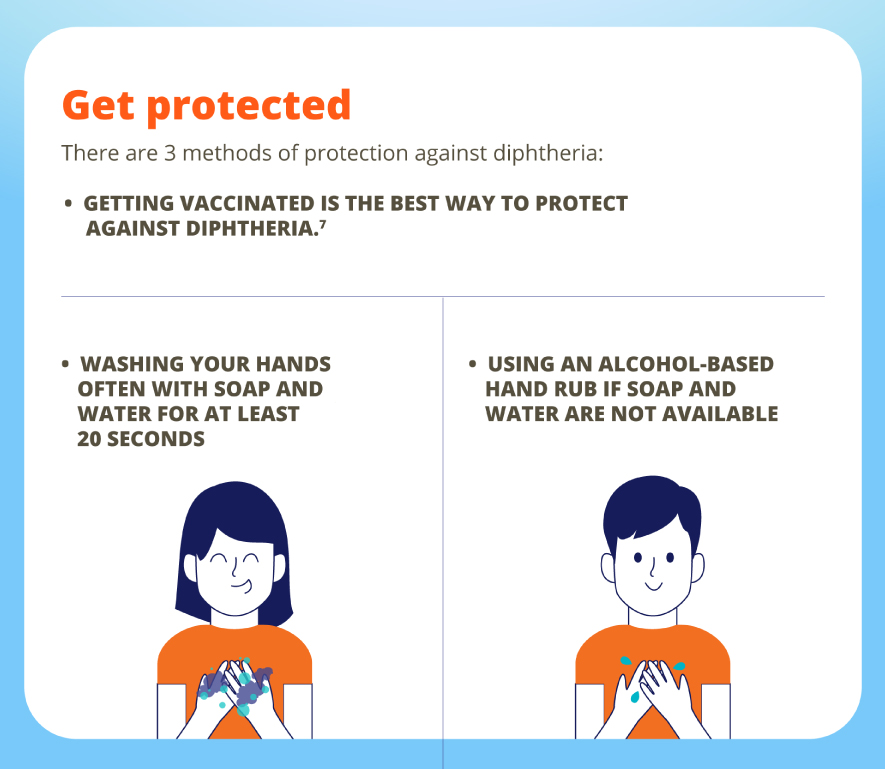Did you know?
Diphtheria was a leading cause of childhood death around the world until a vaccine was introduced.1 However, there are still outbreaks reported in recent years - in 2018, more than 16,000 cases of diphtheria worldwide were reported to the World Health Organization (WHO).1
Diphtheria is a serious infection caused by strains of bacteria that make toxin (poison) and can infect the respiratory tract or the skin.2
How it spreads
Diphtheria is spread by:4
- Breathing in air droplets from an infected person when he/she coughs, sneezes or speaks.
- Coming into contact with open sores or ulcers.
Impact on health
Respiratory diphtheria can lead to complications, including:5
-
Airway blockage.
-
Myocarditis (damage to the heart muscle).
-
Polyneuropathy (nerve damage).
-
Paralysis.
-
Kidney failure
HOW CAN I PROTECT MYSELF
Who is at risk?6
- Children and adults who are not up-to-date with vaccinations.
-
People living in crowded or unsanitary conditions.
-
People travelling to areas where diphtheria infections are more common.
Vaccination
Singaporeans can use Medisave to fund their Tdap vaccination. Patients with complex chronic conditions will be able to use up to $700 per patient yearly, while other patients will be able to use up to $500 per patient yearly.11
Please consult your healthcare professionals for more information on the disease.
Everyday protection includes:12
- Washing your hands often with soap and water for at least 20 seconds.
- Using an alcohol-based hand rub if soap and water are not available.
All Singapore Citizens (SCs) and Permanent Residents (PRs) who meet the criteria for vaccination under the National Childhood Immunisation Schedule (NCIS) and National Adult Immunisation Schedule (NAIS) are eligible for subsidies for nationally-recommeded vaccinations.13
References
- CDC. Diphtheria: About Diphtheria. Available at: https://www.cdc.gov/diphtheria/about/index.html Last accessed September 2022.
-
CDC. Diphtheria. Available at: https://www.cdc.gov/diphtheria/index.html Last accessed September 2022.
-
CDC. Diphtheria: Symptoms. Available at: https://www.cdc.gov/diphtheria/about/symptoms.html Last accessed September 2022.
-
CDC. Diphtheria: Causes and Transmission. Available at: https://www.cdc.gov/diphtheria/about/causes-transmission.html Last accessed September 2022.
-
CDC. Diphtheria: Complications. Available at: https://www.cdc.gov/diphtheria/about/complications.html Last accessed September 2022.
-
Mayo Clinic. Diphtheria. Available at: https://www.mayoclinic.org/diseases-conditions/diphtheria/symptoms-causes/syc-20351897#:~:text=People%20who%20are%20at%20increased,diphtheria%20infections%20are%20more%20common Last accessed September 2022.
-
CDC. Diphtheria: Prevention Available at: https://www.cdc.gov/diphtheria/about/prevention.html#:~:text=preteens%2C%20and%20adults.-,Vaccination,prevent%20pertussis%20(whooping%20cough). Last accessed September 2022.
-
MOH. MediSave. Available at: https://www.moh.gov.sg/cost-financing/healthcare-schemes-subsidies/medisave Last accessed September 2022.
-
Centre for Health Protection, Hong Kong. Diphtheria. Available at: https://www.chp.gov.hk/en/healthtopics/content/24/20.html Last accessed September 2022.
-
MOH. Vaccination and childhood developmental screening subsidies. Available at: https://www.moh.gov.sg/cost-financing/healthcare-schemes-subsidies/vaccination-and-childhood-developmental-screening-subsidies Last accessed September 2022.



